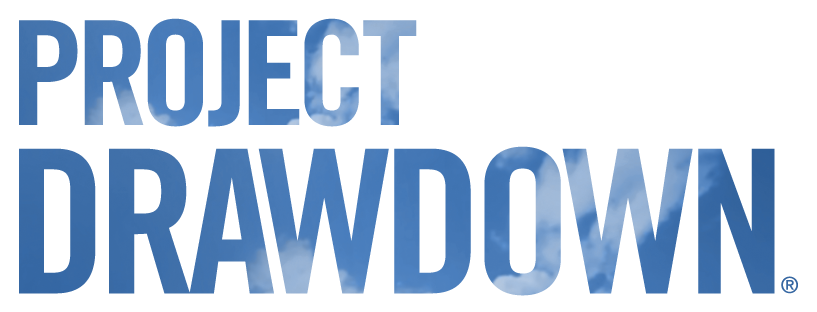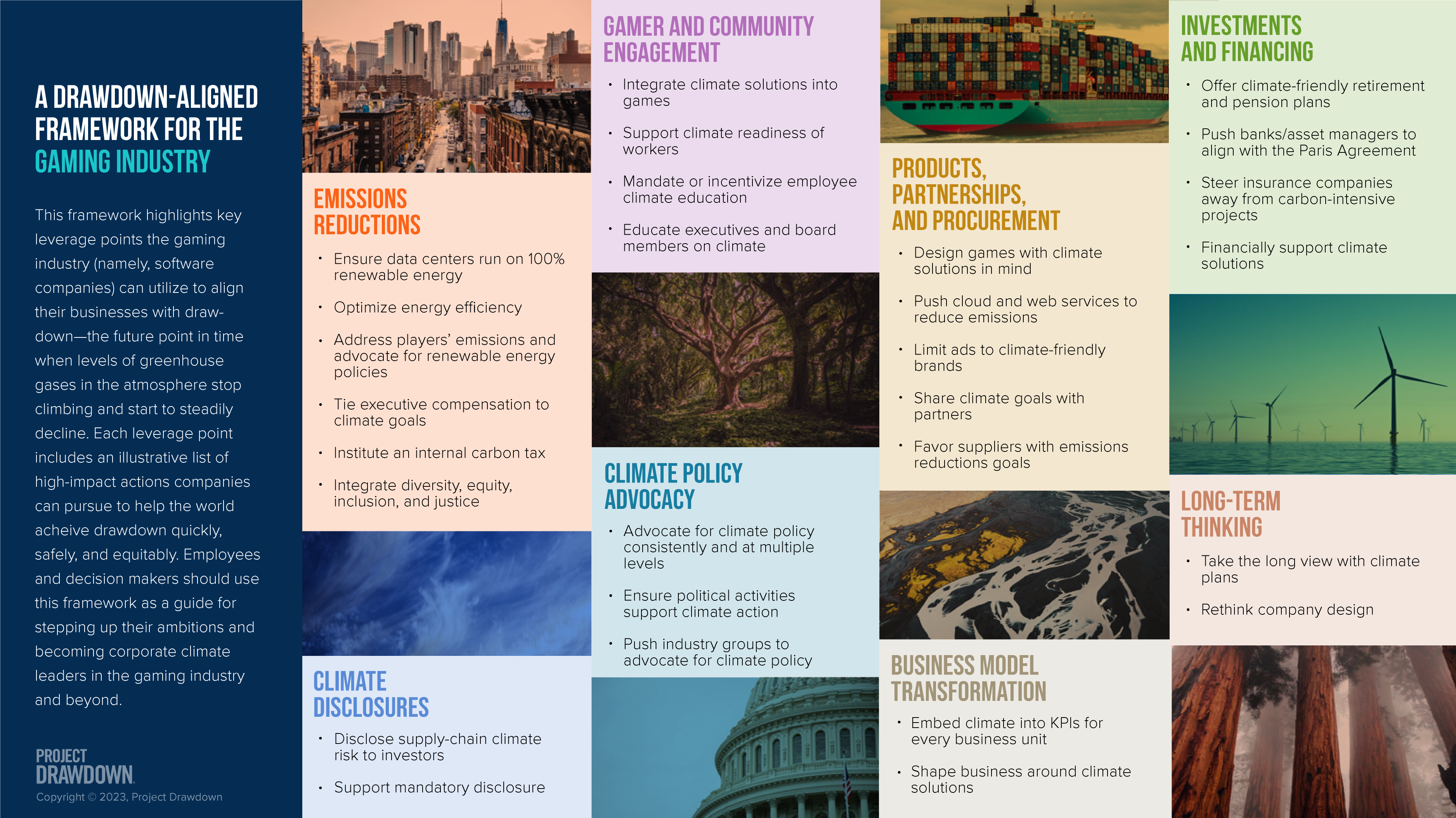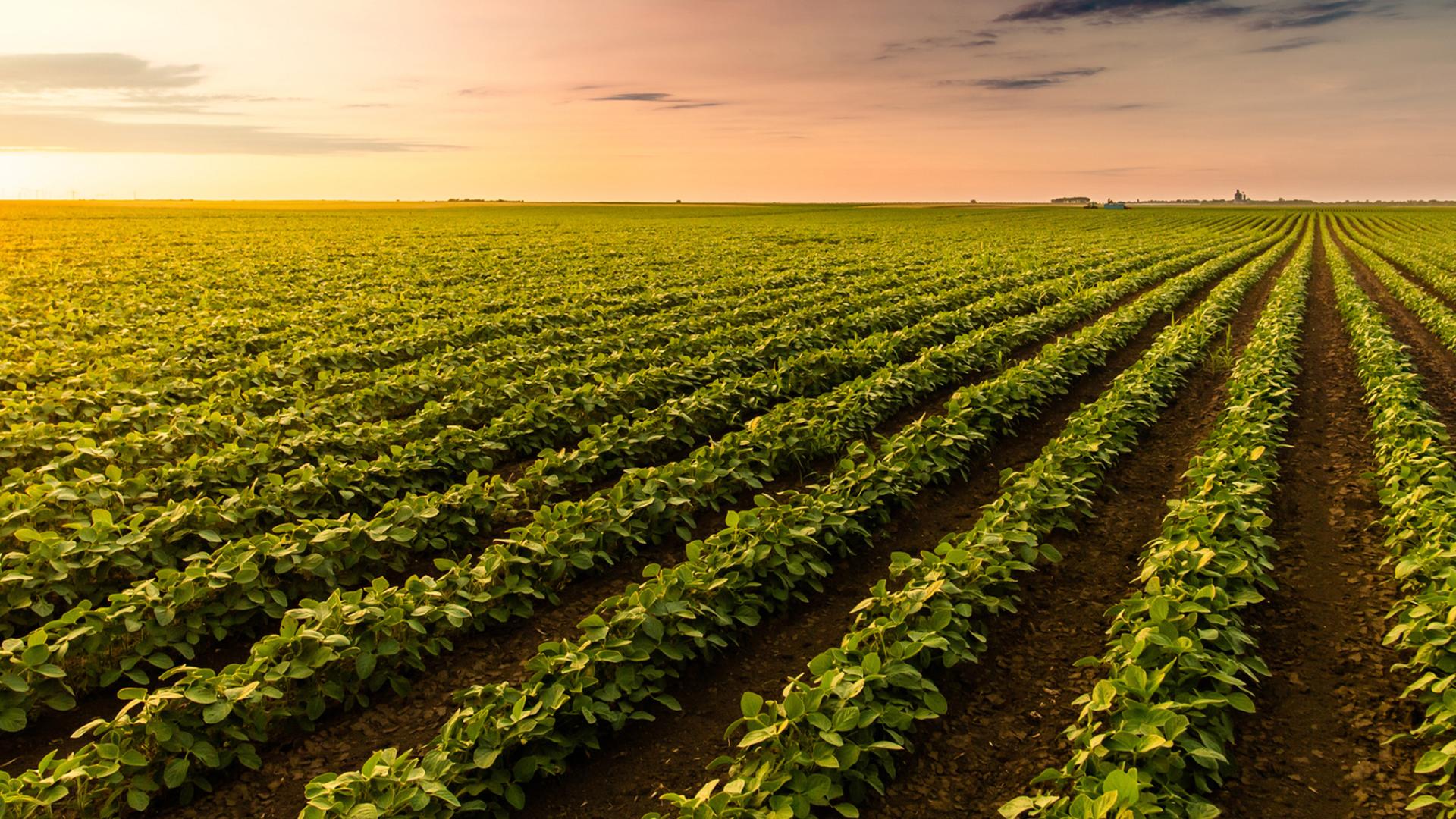Big impact, big opportunity
The gaming industry has a significant impact on the climate. Emissions are generated all along the value chain, from manufacturing and data center energy usage, to e-sporting events and packaging. In the U.S. alone, the annual game-related energy usage is estimated to generate 24 million metric tons of carbon dioxide emissions—the same amount as over 5 million cars. But video games also have an incredible reach: Globally, over 3 billion people—40% of the world’s population—play video games.
At the same time, the majority of video gamers “say that the gaming industry has a responsibility to act” on climate change. The industry has not only an opportunity, but also an obligation, to contribute to drawdown—the future point in time when levels of greenhouse gases in the atmosphere stop climbing and start to steadily decline.
“The gaming industry has grown to be the most popular form of entertainment. A bigger audience means bigger influence, and with bigger influence industry has greater leverage to raise awareness on important matters such as meaningful actions on climate and environment.”
—Tommi Lappalainen, Senior Manager, Sustainability at Rovio
Defining climate ambition for gaming companies
A Drawdown-Aligned Framework for the Gaming Industry offers specific ideas for how the gaming industry (namely, software companies) can help solve climate change through systemic actions like advocating for clean energy policy, integrating climate solutions storytelling into gameplay, and providing employees with climate-friendly retirement plans. The resource shares real-life examples of these recommendations in action, identifies key gaps the industry needs to address, and offers guidance for employees on how to use the framework to further climate action at their companies.
“I am very proud of the work that we are doing with Drawdown Labs. Businesses must take action to address the climate crisis by reorienting their operations toward sustainability and finally delivering on the promise of corporate citizenship. Additionally, solutions need to be tailored to the unique circumstances of each sector, and this new framework from Drawdown Labs delivers specific guidance for the gaming industry.”
—Marina Psaros, Head of Sustainability at Unity
Gaming employees can use the resource to find ways to integrate climate action into their own and their team’s roles; evaluate their company’s climate goals against the framework and identify areas for improvement; communicate to leadership ideas for climate action and real life examples of success; and formulate long-term strategies for their team and company.
More to come
The gaming industry has massive potential to accelerate climate solutions through its operations, economic influence, and ability to reach people through immersive stories and gameplay. But the industry is just one of many that have the opportunity to help shift the corporate climate landscape and move the world toward drawdown. Which industries will emerge as new leaders in corporate climate action? Stay tuned for more industry-specific frameworks from Drawdown Labs!





